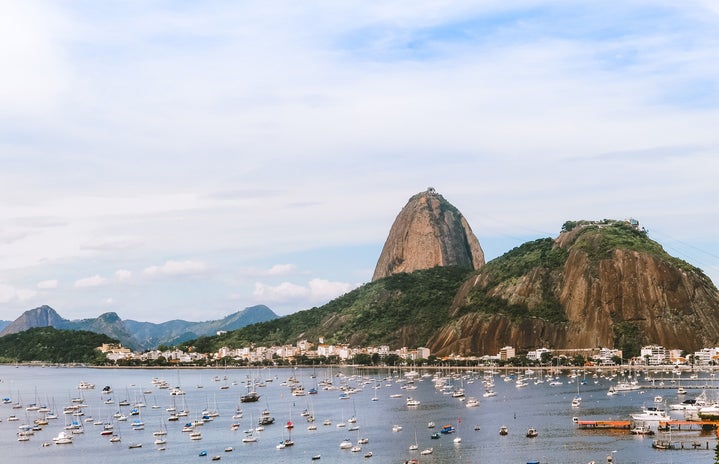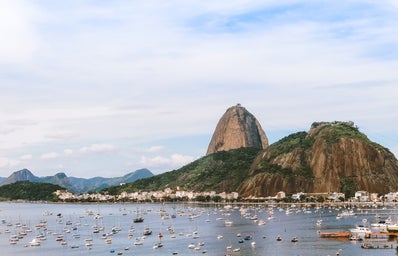First of all, you must know that Brazil has an area of more than 8.000.000 km²(!), which implies a cultural diversity of continental proportions! Unfortunately, the international media painted Brazil as a portfolio of futility, which limited the view of the rest of the world about this country with such rich baggage. So now, you will read about 5 Brazilian productions from different regions and states of the country, which represent us more than football and samba!
- Cidade Invisível
-
The plot of the original Netflix series, “Invisible City”, starts with an apparently accidental fire and a murder, which trigger a police plot and the journey of self-discovery by environmental detective Eric (Marco Pigossi). In his frantic search for clues, Eric discovers an underworld in the city of Rio de Janeiro, inhabited by dangerous folklore creatures, and more human than he could have imagined. Despite being set in the “wonderful city”, the most famous city abroad, the series carries at its core the culture and folklore of the whole country, bringing together elements from other regions, mainly from the Amazon region. With familiar scenarios and legends that every Brazilian child grew up hearing, the aura of the work conveys that tone of identity to even the most remote viewers.
- O Auto da Compadecida
-
In a village lost in the middle of the yellowish dryness of the Paraíba hinterland, the viewer is introduced to two of the most famous characters in Brazilian cinema. Loaded with a strong content of religious moralism, the work narrates the tricks of the clever João Grilo (Matheus Nachtergaele) and his friend, the not so smart Chicó (Selton Mello), to the other residents of the village, which ends in almost fatal confusions, until, in a divine judgment fallen throughout the city, only Mother Mary (the “Compadecida”) is able to save them from the consequences of their acts. In a comical and theatrical way, the film denounces the precarious social situation of the duo, which represents a large part of the northeastern population, and other equally unique characters. The comedy, considered one of the main works of Brazilian cinema, is perfect for those who want to understand the roots of the Brazilian people in their diversity.
- 2 Filhos de Francisco
-
Now, go to YouTube and search for “É O Amor”. Because movie number 3 tells the difficult and resilient story of the Brazilian country duo Zezé di Camargo and Luciano, creators of the bombastic hit you should be listening to now. Focusing on Francisco José de Camargo’s (Ângelo Antônio) struggle to spread his children’s music throughout Brazil, the sensitive and biographical narrative begins on a ranch in the interior of the state of Goiás, and with a family that grows up with a father’s dream. Indeed, if there is any musical style as Brazilian as samba, it is country (or “sertanejo” in Portuguese); so, if you are a music lover, nothing better than learning a little about the history and the origin of this cultural element that is so part of Brazil’s identity.
- O Tempo e o Vento
-
“From 1893 to 1895, the lands of southern Brazil served as the scene of violent fighting between opposing political factions. On the one hand, Republicans defended presidentialism. On the other hand, the Federalists sought the establishment of a parliamentary regime. A civil war begins and leaves more than ten thousand dead. In Santa Fé, Terra-Cambará and Amaral are fighting for possession of the city.” These words are the preface to the cinematic adaptation of Érico Veríssimo’s classic “O Tempo e o Vento”. In the Pampas, the cold southern wind carries the story of a family for 150 years, at a time when Brazil was still an empire. From Ana Terra (Cleo) to Bibiana (Marjorie Estiano), the viewer is introduced to a piece of the country’s real history through the eyes of women who spun, cried and waited, during the Farrapos War. For fans of period romances, the feature has a strong cast of Brazilian television actors, and will make even those who do not belong to this land get emotional.
- 3%
-
With deep characters and a respectful Brazilian soundtrack, Netflix Brazil presents a dystopia of Hollywood caliber productions of the genre. In a society destroyed by the end of natural resources, 3% of the population lives comfortably in Maralto, a tropical island with technology, advanced medicine, food and the treasure: water. The rest of the people survive in the Continent, anxiously waiting for their 20th birthday, when they will be able to participate in a battery of eliminatory tests and challenges, so that in the end, 3% of the candidates are part of the long-dreamed Maralto. Amid whispers of revolution, the series features strong characters with different trajectories and points of view of the “Process” and the mechanics of the society in which they live. Still, the script brings, in the ethnic diversity of the characters, analogies to the real challenges that each social group faces, evoking their insecurities and strengths.
—————————————————-
This article was edited by Anna Bastos.
Liked this type of content? Check out Her Campus at Casper Libero for more!


